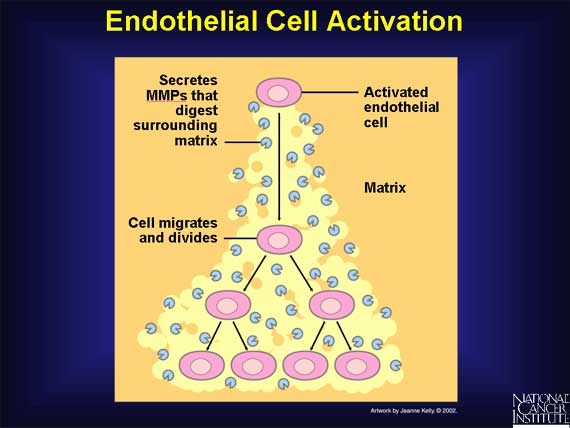|
The activation of endothelial cells by VEGF or bFGF sets in motion a series of
steps toward the creation of new blood vessels. First, the activated
endothelial cells produce matrix metalloproteinases (MMPs), a special class of
degradative enzymes. These enzymes are then released from the endothelial cells
into the surrounding tissue. The MMPs break down the extracellular
matrix--support material that fills the spaces between cells and is made of
proteins and polysaccharides. Breakdown of this matrix permits the migration of
endothelial cells. As they migrate into the surrounding tissues, activated
endothelial cells begin to divide. Soon they organize into hollow tubes that
evolve gradually into a mature network of blood vessels.

< Previous | Index | Next Slide > |